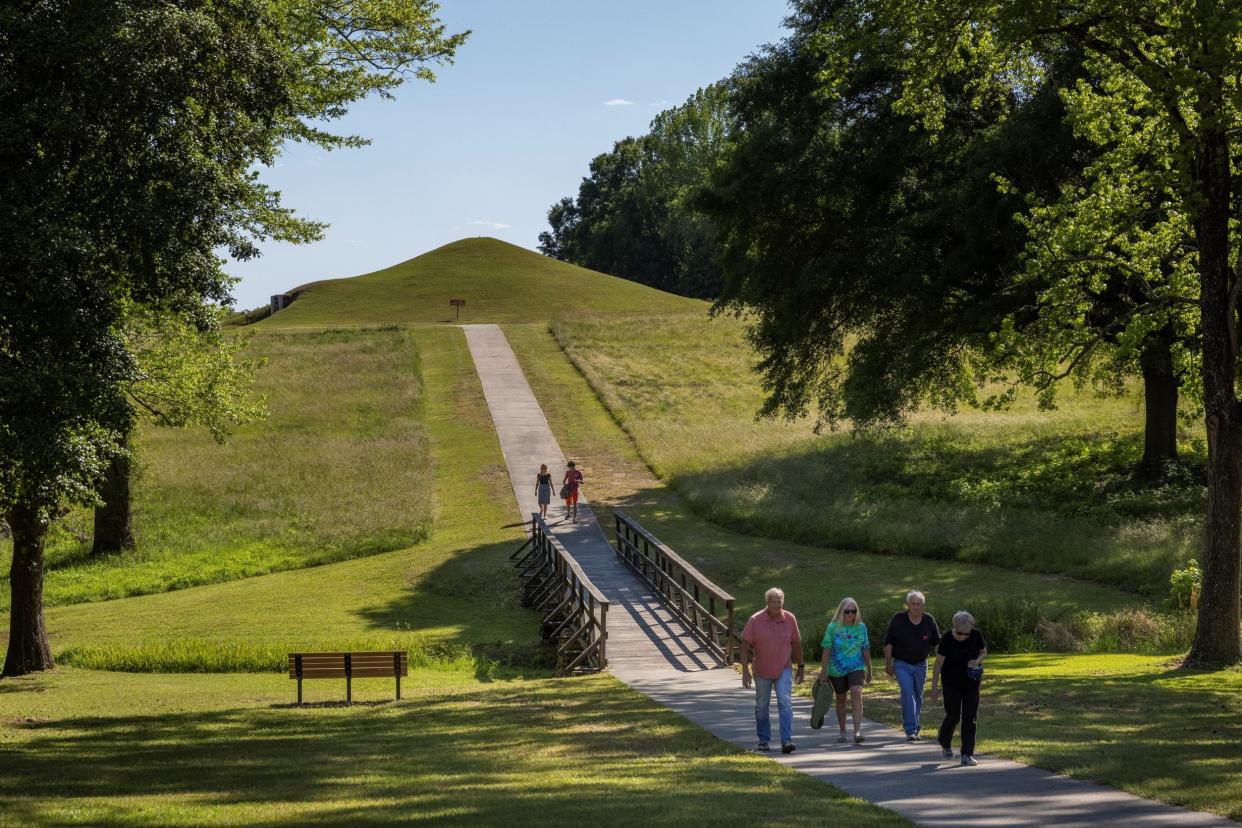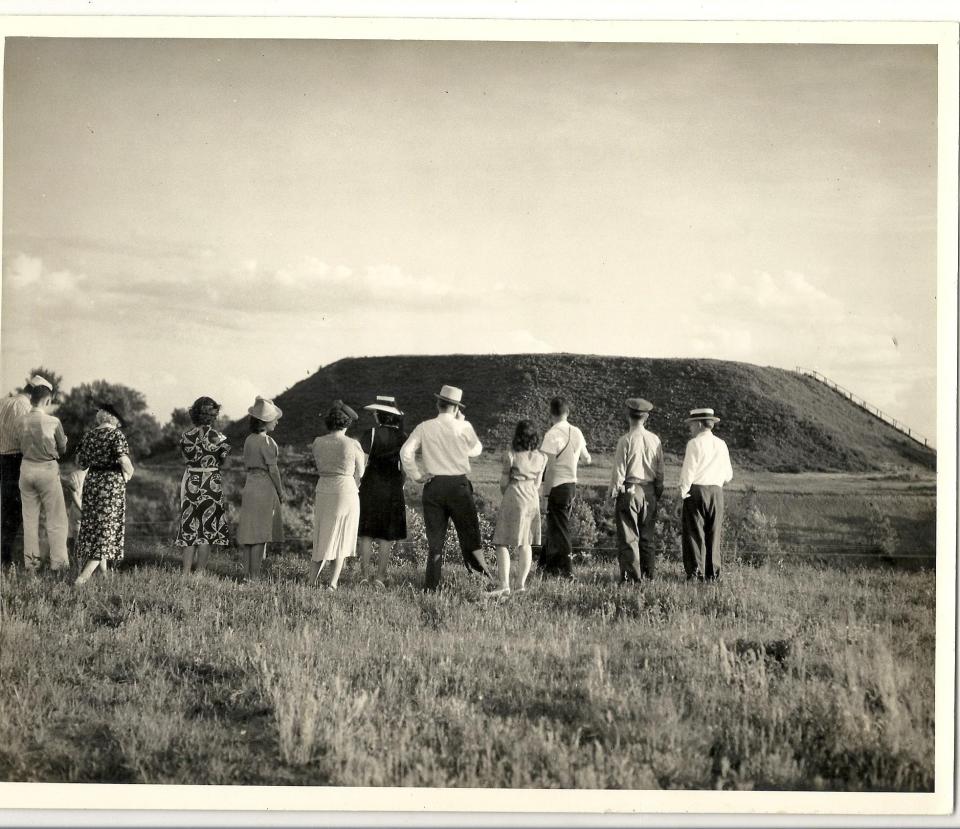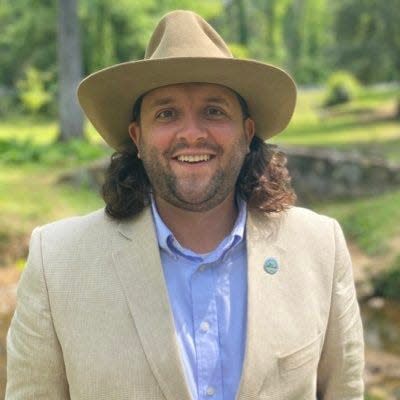An old park in the middle of Georgia worthy of becoming new national park | Mark Woods

The National Park Service, created with the Organic Act of 1916, celebrated another birthday Thursday.
So here’s a birthday trivia question: If you live in Northeast Florida, where is the closest national park?
Since 1916, the @NatlParkService has protected our nation’s treasures to ensure that current and future generations can enjoy national parks -- places that belong to all Americans. Today we commemorate 106 years of service! 🧁https://t.co/0AwvPu7KyY#NPSBirthday pic.twitter.com/GdwcEIXXMx
— National Park Service (@NatlParkService) August 25, 2022
OK, this always is a bit of a tricky answer, starting with how you’re defining a national park.
As our National Park System turned 106, it included 423 sites with a smorgasbord of designations, from national seashores (like Cumberland Island) to national monuments (Castillo de San Marcos) to national memorials (Fort Caroline). All are national parks – including, within Jacksonville’s sprawling city limits, the Timucuan Ecological and Historic Preserve.
Mark Woods: A decade later, one thing hasn't changed — timelessness of our national parks
But when you hear this question, you probably think of the places that, through an act of Congress, have been given the crown-jewel of NPS designations: National Park as their name.
From Acadia to Zion, these are America’s most famous parks. Since 1916, the number of places with this designation has grown from 14 to 63.
While there are three in Florida (Everglades, Biscayne and Dry Tortugas), for the last two decades the closest to Jacksonville — 280 miles from our downtown — has been Congaree National Park in South Carolina.
But by the time the park service celebrates its next birthday, there could be a new answer to this question.
America could very well have a new national park, about 270 miles from Jacksonville, in Macon, Georgia.
Yes, Macon.
Ocmulgee Mounds could join America's iconic parks
If you’ve only driven the interstate past what could become Ocmulgee Mounds National Park and Preserve, the middle of Georgia might sound like an unlikely place to find a park that would join the likes of Yellowstone and Yosemite.
But those behind the effort make a compelling case for why Ocmulgee Mounds belongs in such company, starting with this: While it would be a new national park, it is not a new park. In fact, you could argue it’s one of the oldest on this continent, a place with 17,000 years of human history.
Currently known as Ocmulgee Mounds National Historical Park, it has been described as a “2,000-acre time capsule” by Conde Nast Traveler.

It’s the site of the largest archaeological dig in United States history, a place where rolling hills still are dotted with earthen mounds built by the people who lived here a thousand years ago.
It’s a place that tells a story of United States history, of the Muscogee (Creek) Nation people who were forcibly removed from this land 200 years ago — and whose descendants have returned to help to preserve it and, in the process, tell their story.
And beyond all the millennia of human history, those pushing for the designation say that one of the reasons this place is worthy of national park status is that it still has a key ingredient found in our iconic parks — natural beauty.
Becoming a 'national park and preserve' involves much more than changing signs
Ocmulgee Mounds became a part of the National Park System during the Great Depression.
After local citizens purchased property along the Ocmulgee River and donated it to the federal government, President Franklin D. Roosevelt used the Antiquities Act to establish Ocmulgee Mounds National Monument on Dec. 23, 1936.
During that period, the Works Progress Administration led large-scale archaeological digs, collecting more than 2 million artifacts, some thousands of years older than the pyramids in Egypt.
For more than 80 years, Ocmulgee Mounds remained a national monument with about 700 acres in its boundaries. In 2019, it quadrupled in size to about 2,800 acres and received its current designation.
The next leap — from “national historical park” to “national park and preserve” — is an enormous one, involving much more than changing a few words and signs.
The proposal calls for taking a patchwork of existing conservation lands, adding to it, and expanding the park boundaries to about 70,000 acres, running nearly 60 miles along the Ocmulgee River.
The “preserve” part of the designation — similar to, for instance, Denali National Park and Preserve in Alaska — was critical to local support. It allows for hunting, fishing and limited resource extraction.
In 2019, the National Park Service began a special resource study that typically lasts three years and, using everything from scientific research to public input, basically determines whether a place is worthy of national park status.
At any point in the process, if Ocmulgee doesn’t meet one of the criteria, the study is canceled.
That hasn’t happened. And the study should be nearing the finish line.
The hope is that it soon will be handed to Interior Secretary Deb Haaland, who will make a recommendation to Congress — which ultimately decides whether to send a bill to the president authorizing the designation of a new national park.
If that happens, Ocmulgee Mounds instantly will be added to bucket lists and vacation plans.
A report commissioned by the National Parks Conservation Association found that the number of annual park visitors, currently about 200,000 a year, would jump roughly six-fold in the next 15 years to 1.3 million — and that this would add nearly $200 million in annual economic impact in middle Georgia.
That economic impact is important to Seth Clark, Macon’s 37-year-old mayor pro tem. But it isn’t necessarily what drove him, as executive director of the Ocmulgee National Park and Preserve Initiative, to lead the effort to create Georgia’s first national park.
'An act of atonement'
Clark describes himself as a “son of Middle Georgia.”
He says one granddaddy worked for the Bibb Company, the textile company founded in Macon in 1876 but closed in 1998, and the other worked at Robins Air Force Base.

He grew up in a rural county outside of Macon, hunting and fishing on land that would become part of the national park.
“And I hope to God my son will do the same,” he said, talking on the phone while waiting for his 7-year-old after school. “It’s a beautiful patchwork of land that has been taken care of for a long time.”
You can sense his love of this land as he talks about how this is where the Atlantic Seaboard fall line separates two distinct types of geography — the Piedmont region to the coastal plain — with the largest river in the state of Georgia running through it. Granite and clear water to the north, lowcountry blackwater to the south.
“I’ve fished all over the world, and I’d put the Ocmulgee River up next to anything, anywhere,” he said.
He says this is a big part of what drives him to create a national park.
“This is home,” he said. “I have a deep, deep cultural and familial connection.”
And yet he knows quite well that his family’s connection the land is a speck in its timeline; that the hunting and fishing is what drew people to this fertile land thousands of years ago; and that there are people who live a thousand miles away, in Oklahoma, who call this place their homeland.
He describes what is happening now — working with the Muscogee (Creek) Nation to make this a national park — as an important step not just for the tribe, but for modern-day Middle Georgia.
“There’s a healing I didn’t understand needed to happen until I started working with the tribe,” he said. “The act of conserving this land with the stewards of now – people like my family – and the stewards who were forcibly removed, there's an act of atonement in that process that this community is very much in need of.”
He suggests talking to Tracie Revis about what this land means to her and nearly 100,000 Muscogee Nation citizens.
'It literally felt like coming home'
Revis, 44, grew up mostly in Oklahoma. She is Yuchi and Muscogee (Creek). Her family was part of the effort in the 1970s to bring native voices to Ocmulgee Mounds.

If you walk into the park visitor’s center today, you’ll see a large portrait of her Aunt Eddie, who worked as a cultural ambassador for the park.
When Revis came here as a child, she recalls feeling all kinds of emotions — including anger.
“Seeing our homelands, you don't quite understand what is going on,” she said. “And then there's a lot of misrepresentation in the Southeast about who we are. The story is not told. Our words are mispronounced. And so there's a bit of anger that comes with that.”
She grew up to be a lawyer, always working in Indian country. She became the first female Chief of Staff for the Muscogee (Creek) Nation. And while working for Chief David Hill, the nation’s current leader, she made several trips to homelands in the Southeast, including Ocmulgee Mounds.
Returning here as an adult, she saw it differently.
When she looked at the landscape, she pictured an overlay to the past, with thriving communities that existed long before the Macon of today.
When she walked through the Earth Lodge, she inhaled and smelled a familiar smell – the plant they still use to make medicines.
She stood atop Great Temple Mound. It’s 55 feet tall, the grandest of the mounds. After it was built with an estimated 10 million baskets of dirt, leaders could stand atop it and look out at the village and landscape.
Today there is a staircase leading to a view of Macon and the landscape that remains.
When Revis stood there, she thought about the ancient leaders. She also thought about how, as a woman, she wouldn’t have been standing there.
“For me, it was very surreal,” she said. “It’s a very emotional connection.”
And when she walked into the visitor’s center and saw family photos hanging on the wall …
“It literally felt like coming home,” she said.
At the start of this year, she moved to Macon to become part of the effort to make this a national park. She is the Director of Advocacy for the Ocmulgee National Park and Preserve Initiative.
There are reasons to believe that in the next year she and Clark, along with a broad coalition of Georgians, will get their wish. The national park designation has broad bipartisan support in the state. The tribe, which owns part of the land in the expansion, would be involved in management. And at this moment in history, America has its first Native American Interior Secretary (Deb Haaland) and first Native American atop the National Park Service (Chuck Sams), both committed to preserving native homelands and telling more complete stories of history.
Ocmulgee Mounds is a natural place to do that.
Our national parks, like the country itself, are full of lands that were taken from Native Americans.
Revis says that when she returned here as an adult, she realized that the ancient voices never disappeared from this part of Georgia. They remained in the land and water and earthen mounds.
She wants people from all across America to come to the middle of Georgia, drive past signs that say “Ocmulgee Mounds National Park and Preserve,” hear those voices and simply experience this place.
“I want people to see this lush, beautiful area and enjoy it,” she said. “Enjoy it for what it is. Enjoy being outdoors and connecting with what is there. It’s a powerful place.”
mwoods@jacksonville.com
(904) 359-4212
This article originally appeared on Florida Times-Union: Georgia's Ocmulgee Mounds worthy of becoming new national park

